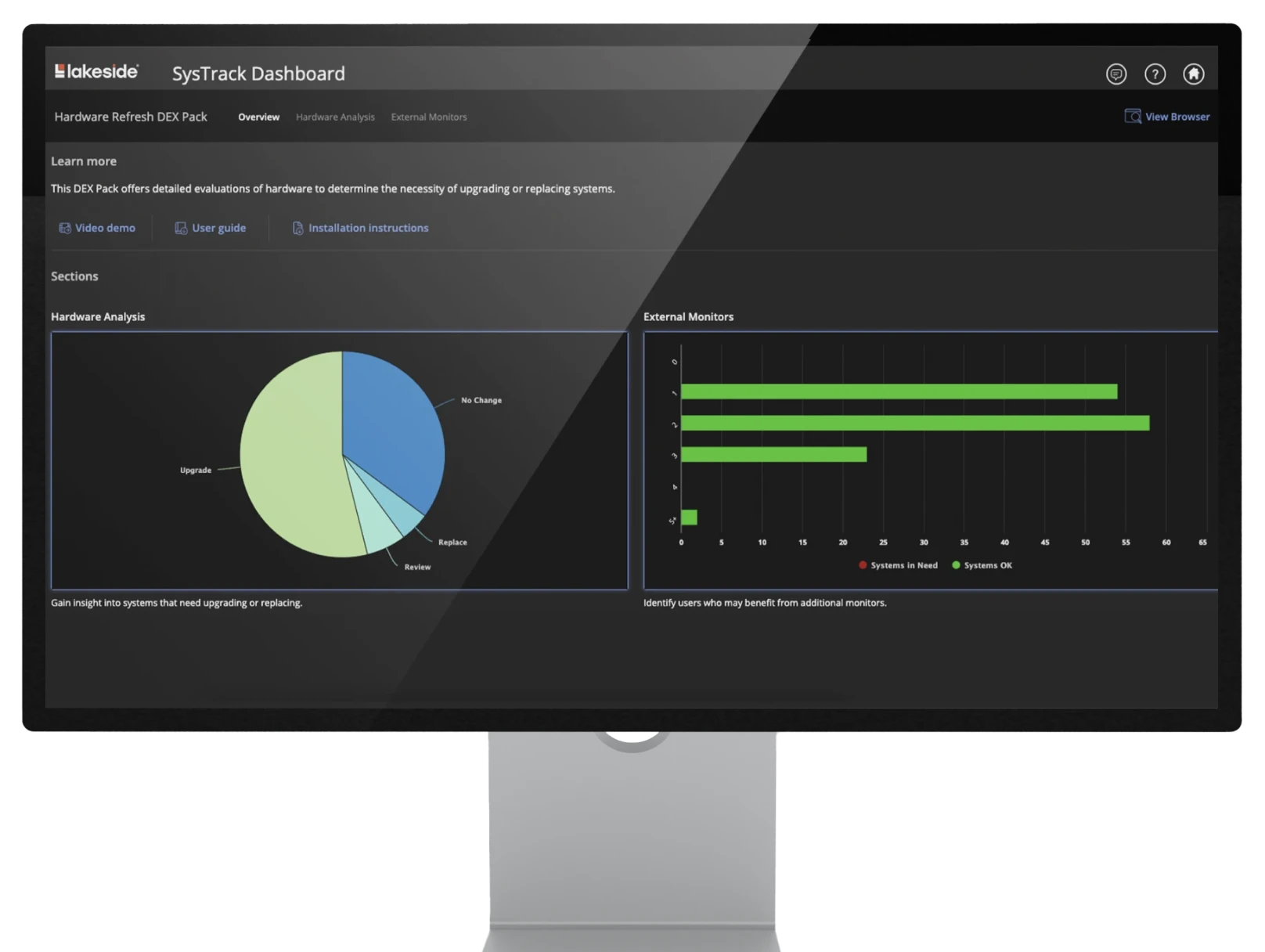Hardware Optimization
See the biggest savings by taking a data-driven hardware right-sizing approach

GOAL
Optimize hardware use across your organization to improve end user experience and realize cost savings.
Get the Most out of your Hardware
When it comes to hardware, IT teams often struggle to gain visibility into the performance of these assets from a user perspective, not to mention how they’re actually being used. Derive the most value out of devices across your organization by understanding exactly what end users need and when they need it.


Outcomes
Did you know?
Organizations have saved hundreds of thousands of dollars using SysTrack for hardware optimization. With our unparalleled data collection plus our unique Velocity Framework, some of the largest global companies count on Lakeside to support need-based and data-driven approaches to hardware refreshes and right-sizing strategies.
Hardware Rightsizing & Reclamation for Global Enterprise:
Our Approach to Hardware Optimization
Work with the organization to define device criteria based on business goals
Phase 01 – Project Start
Phase 02
Deploy SysTrack to collect accurate, real-time endpoint data
Analyze hardware monitoring, system health, battery life and more
Phase 03
Phase 04
Identify machines for optimization or refresh
Return on Value calculations